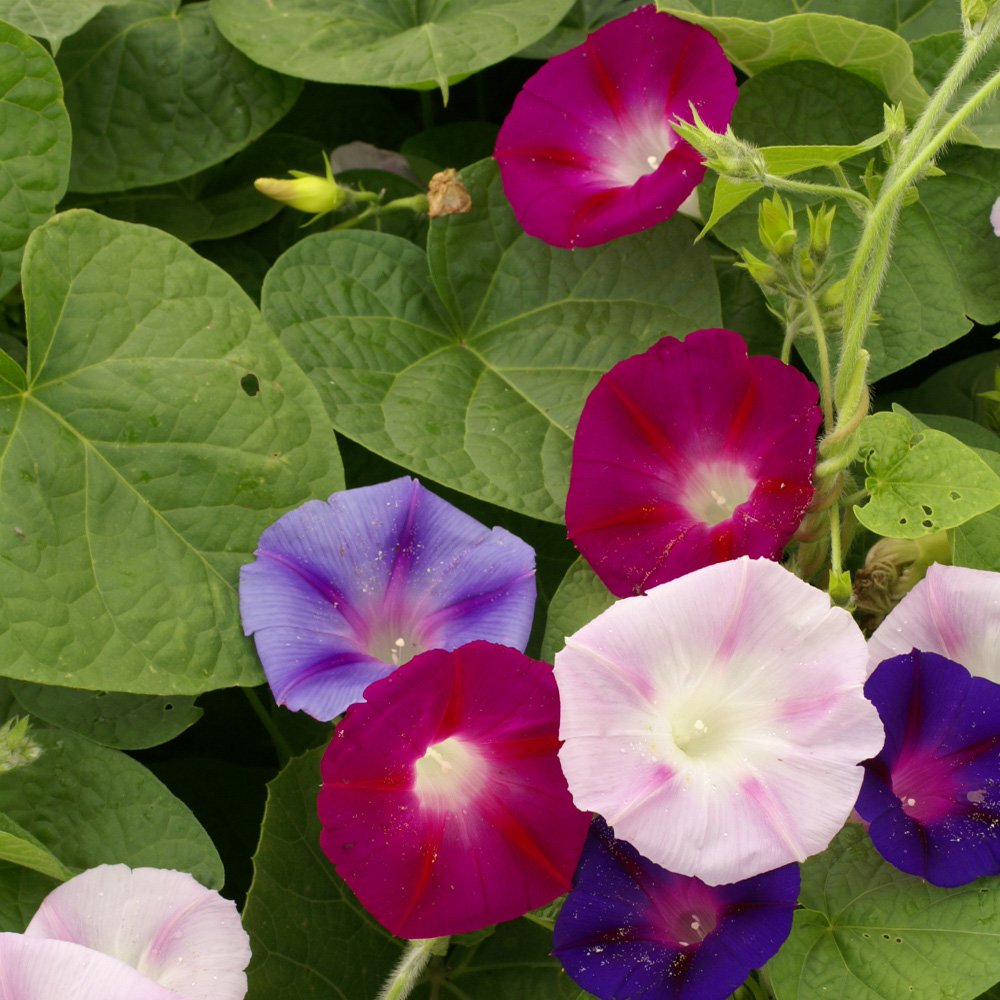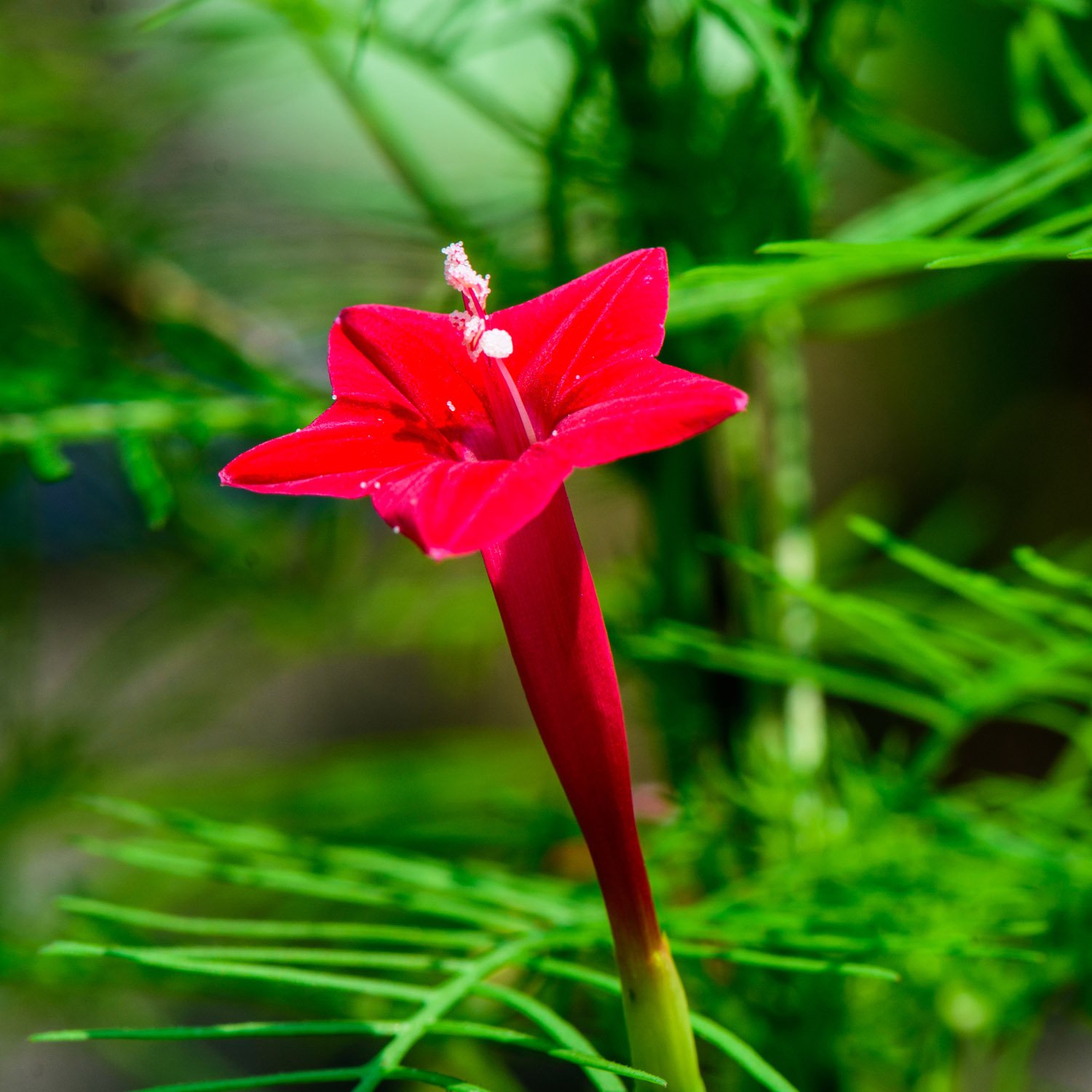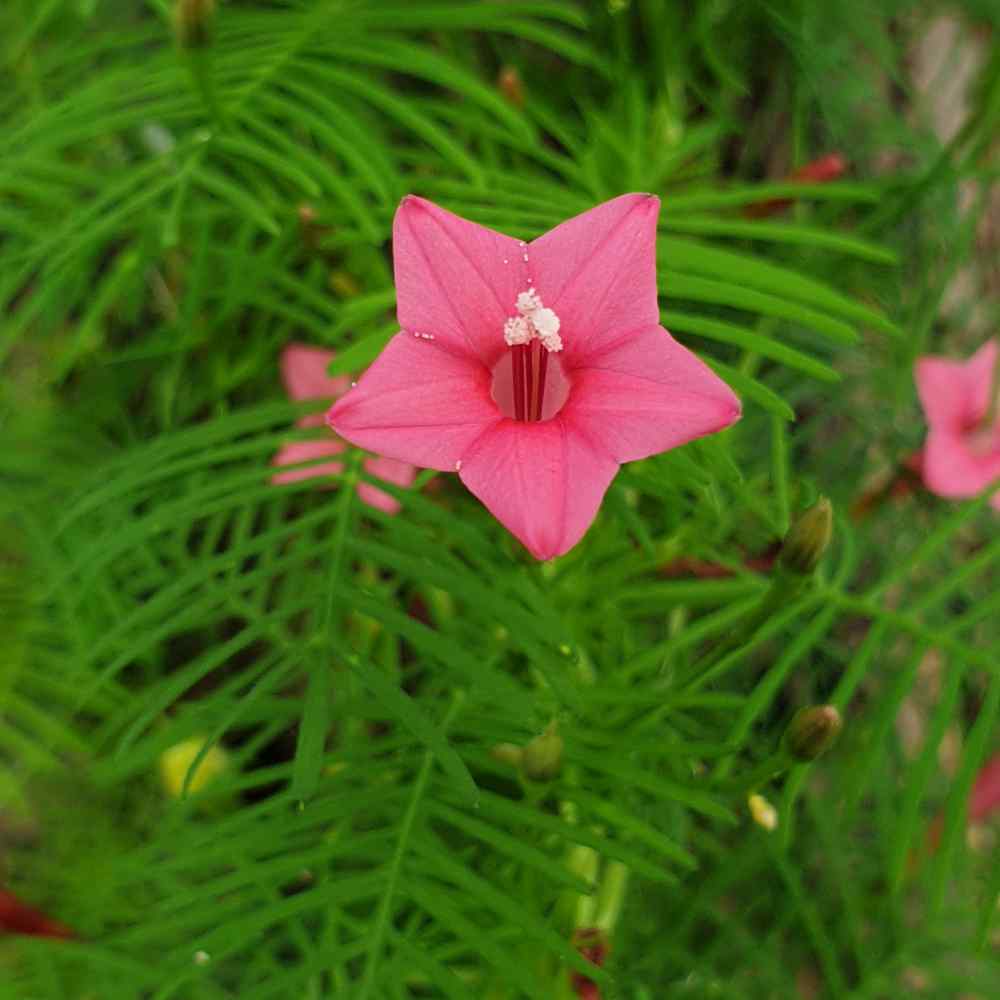
Cardinal Climber Planting Guide
Quick Facts About Cardinal Climber
A humming bird's favorite, Cardinal Climber vine is a colorful, vertical addition to the summer landscape. This plant has palm like leaves that beautifully backdrop the 1 inch dark red blooms from early summer until the first frost.
Planting Time
Plant indoors 4 - 6 weeks before the last frost. Or, start directly outdoors after danger of frost has passed.

Planting Location
Plant in full sun with well-drained soil.
How to Plant Cardinal Climber
- You have two options for planting seeds: Sow them directly into the garden at a depth of 1/4 inch after the risk of frost has passed. Alternatively, start seeds indoors four to six weeks before the average last frost date in spring.
- Presoak seeds overnight before planting 2 - 3 seeds per cell or plant.
- Once seedlings sprout, ensure they receive plenty of light by placing them on a sunny windowsill or positioning them 3-4 inches below fluorescent plant lights that are switched on for 16 hours daily and off for 8 hours at night. Adjust the lights as the plants grow taller. Avoid using incandescent bulbs as they generate excessive heat. Remember, most plants need a period of darkness to thrive, so do not keep the lights on for 24 hours.
- Transplant into garden when temperatures are consistently warm.
- Before transplanting, seedlings need to be “hardened off”. Accustom young plants to outdoor conditions by moving them to a sheltered place outside for a week. Be sure to protect them from wind and hot sun at first. If frost threatens at night, cover or bring containers indoors, then take them out again in the morning. This hardening off process toughens the plant’s cell structure and reduces transplant shock and scalding.
- Space plants 24 inches apart in garden.

Care And Maintenance
- Maintain weed control throughout the growing season. Weeds can compete with plants for water, space, and nutrients, so it's essential to manage them by regular cultivation or by applying mulch to stop their seeds from sprouting.
- Mulches play a crucial role in retaining soil moisture and regulating soil temperatures consistently. When dealing with annual plants, using organic mulch made from shredded leaves can enhance the appearance of the bed naturally and enrich the soil as it decomposes over time. Remember to avoid placing mulch directly against a plant's stems to avoid potential rot issues.
- Give the young plants a regular weekly watering of at least one to two inches while they become established. Mature Cardinal climber can handle dry soil, but since its parent species are tropical plants, it thrives when the soil is kept moist. Ensure it gets a minimum of one inch of water per week, whether from rain or watering. Prolonged dry spells are not preferred by the Cardinal climber.
- In warmer climates, all members of the Ipomoea family can become aggressive self-seeders.
- It can be grown in containers, but the vine requires support for climbing. Due to its vigorous growth, the cardinal climber may outgrow other plants in the container or surrounding area. Alternatively, it can be planted in a hanging basket, allowing it to cascade down without the need for support.
- Cardinal climber rarely needs feeding unless the soil is very poor and infertile.




































